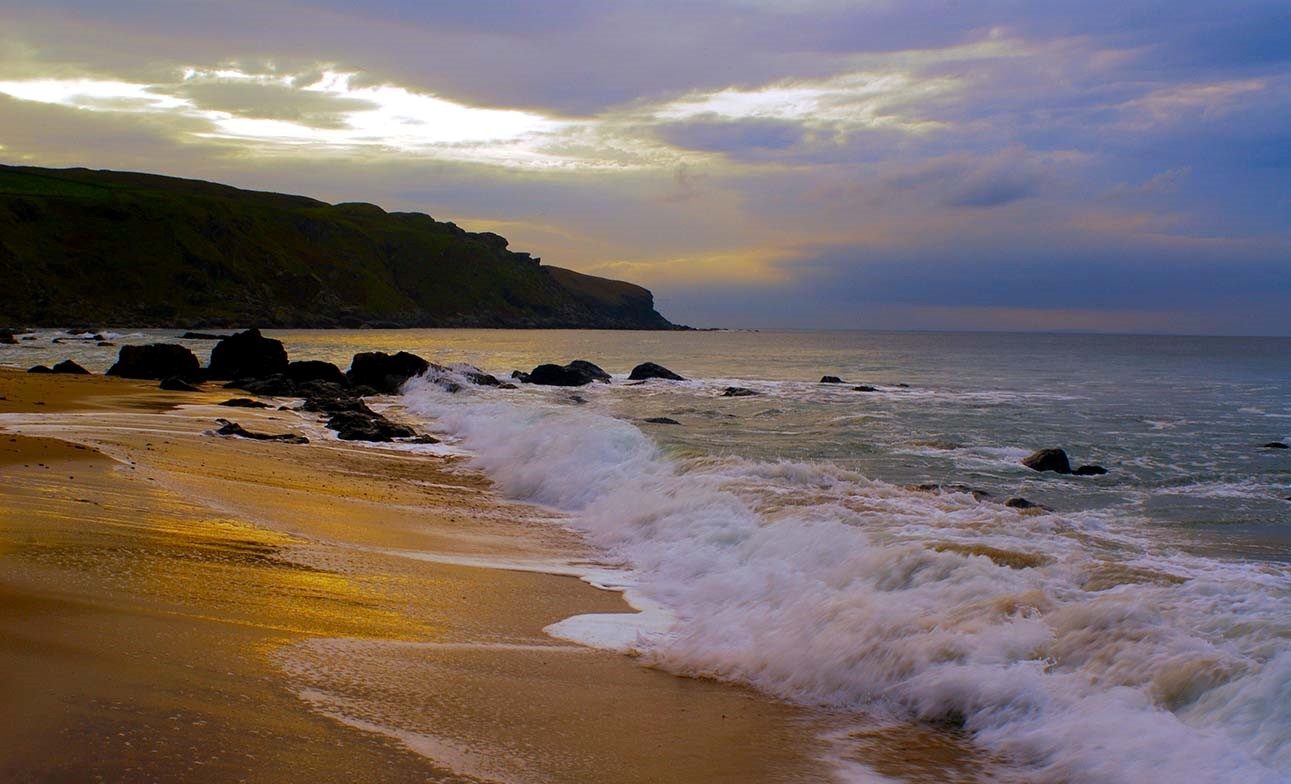IRENA chief: Europe is ‘the frontrunner’ on tidal and wave energy

15.09.2020
By Davine Janssen and Frédéric Simon | EURACTIV.com
New forms of ocean energy are gaining interest globally, and because European companies are leaders on tidal and wave technologies, that is good news for the environment and for the European economy, argues Francesco la Camera.
Francesco La Camera is Director-General of the International Renewable Energy Agency (IRENA), based in Abu Dhabi. He spoke to Frédéric Simon, the energy and environment editor of EURACTIV.
INTERVIEW HIGHLIGHTS:
- European companies hold around 23% of all ocean energy patents globally, making Europe a global leader on tidal and wave.
- Tidal energy is closer to commercialisation than wave energy, with 512.5 MW and 2.3 MW installed respectively.
- But the theoretical potential of wave is higher, with an estimated capacity of around 29,500 TWh per year, compared to 1,200 TWh for tidal. This means wave energy alone could theoretically meet all global demand for energy, says Franceso La Camera.
- To unlock the potential of wave energy, La Camera says public intervention is needed to bring down the costs and having scale advantages.
- The main advantage of ocean energies is that they can help stabilise the electricity system, because they don’t suffer the same kind of variability than solar and wind.
- The only potential downside is the environmental impact on marine flora and fauna, which needs to be further researched.
Apart from offshore wind, ocean energy also covers two lesser known renewable energy sources – tidal and wave. Can you briefly explain the difference between the two?
Ocean energy technologies are categorised based on the resource utilised to generate electricity. When that is a tidal stream, we call it tidal energy and when waves are converted, we call it wave energy. These are the most developed technologies concerning ocean energy.
If we look at the ocean energy market, more than 98% of the total ocean energy installed capacity – 512.5 megawatts (MW) – is of the tidal range technology, and mainly 2 large projects: a 254 MW plant in the Republic of Korea and a 240 MW plant in France.
When it comes to wave energy, there are currently 33 wave energy converters with a combined capacity of 2.3 MW deployed in 9 projects across 8 countries on 3 continents. The only active project with a capacity above 1 MW is located in Hawaii. Other locations with active projects include Gibraltar, Spain, Greece, Italy, Portugal, France and Israel.
What are the assumptions for assessing the potential? Is it linked to a certain timeframe?
The potential is in absolute terms, it is not related to a certain period. It is what we think could be the maximum deployment of the technology.
Concerning tidal, there are different deployment challenges, such as limited site availability and high capital investment, and sometimes also some unclear environmental impacts. The theoretical potential of tidal energy is significantly smaller than that for wave, with around 1,200 terawatt-hours (TWh) per year due to the geographical limitation.
The potential for wave energy is more important; in our estimates it is about 29,500 TWh per year, which means that wave energy alone could theoretically meet all global energy demand. Wave energy is best placed between 30 and 60 degrees of latitude and in deepwater, meaning more than 40 meters. That is the ideal location for wave energy.
We are seeing some interesting developments in ocean energy, combining tidal and wave. Projects announced to start operation in 2020 already added around 24 MW of additional capacity. It means that in one year almost twice the total current cumulative capacity would be installed. The new capacity mainly come from tidal stream and wave technologies.
What could unlock the potential of wave energy?
Wave energy has not yet seen a convergence in technology. Almost 10 different types of wave energy technologies are simultaneously being pursued. This is partly based on the fact that wave energy is not yet as mature as tidal stream energy.
We think that for these technologies, public intervention is needed to bring down the costs and having scale advantages. Revenue and capital support through de-risking and innovative finance mechanisms will be crucial. Also, the permitting issue is a very important one to solve. International collaboration and involvement of multiple stakeholders can be key to advance the technologies and deployment.
But we have witnessed some good progress. For example, a few years ago, tidal turbines had a capacity of only 100 kilowatts (KW), now they go for 1.5 MW. We think that in the next three to five years, 3.5 extra gigawatts (GW) of installed capacity may be added to the present level.
This is an important step forward for the sector because we are now moving from megawatts to gigawatts of installed capacity. And we think that 10 GW of ocean energy deployment worldwide will be possible by 2030.
What are the environmental issues associated with tidal?
The environmental impact of ocean energy technologies, including tidal, is still uncertain. Relatively little is known about the impact of ocean energy technologies on marine life due to the early stage of technology deployment. There are potential impacts on fishing, or on the conservation of marine flora. Wave and tidal may also pose constraints on navigation, etc. However, work is ongoing to ensure that all those risks can be properly managed.
On the positive aspects, we can say that this technology can benefit islands that may be difficult to reach with the usual electricity grid system and where diesel-powered generators may be more expensive to operate. Tidal can reduce power cost to USD 10-15 cents per KW and usually for diesel it will be more than two or three times the cost.
I understand one of the environmental issues with tidal is that it requires the construction of large dams. How can that be addressed?
That has to be carefully considered, indeed. Tidal range technologies are similar to hydropower plants with a dam. However, the market is moving in a different direction which is tidal stream technologies. They do not need a dam and basically use the water flow in oceans, driven by tides, as air flow is used by wind turbines. But these are all obstacles that may be overcome with good planning and project design.
Renewables are currently dominated by wind and solar. What can ocean energy bring to the energy system that these two renewable energy sources don’t have?
Their main advantage over wind and solar is that they can help stabilise the electricity system, because they don’t suffer the same kind of variability than solar and wind.
Wave and tidal energy are always there, because the sea is always moving. So, they could offer a way to balance the grid and give flexibility to the energy system, much like hydroelectric dams.
At EU level, the European Commission is preparing an offshore energy strategy, which is due out in October. What kind of policies do you think would be helpful to support wave and tidal?
The interest in ocean energy is global, with Europe as the frontrunner. While 31 countries on 6 continents have deployed or are planning to deploy ocean energy technologies, three-quarters of the currently installed capacity and more than half of the pipeline capacity is projected to be deployed in Europe.
The challenge is to lower the cost, increase production and deployment in order to get scale effects. Effectively, this means subsidising projects, and speeding up the permitting process to one month maximum.
The new EU strategy could be very important because European companies are leaders on tidal and wave energy. European countries hold around 23% of all ocean energy patents globally. I can understand why the European Commission is paying attention to the sector.
This is even more the case for offshore wind, where most of the production and technology is located in Europe. So, I think eventually these technologies are good for the environment, good for the security of our energy system, and good for the economy – in this case for the European economy.
I understand there’s an industrial opportunity for Europe to export wave and tidal technology. Who are the other big players globally? You mentioned South Korea at the beginning of the interview…
While Europe, particularly the UK, Spain, Portugal, France and Italy as well as the USA remain at the forefront, an increasing interest in the deployment of wave energy converters is now arising in Asia – particularly China – Australia and even South America and Africa.
The energy transition to achieve our global climate and sustainable development objectives is a challenge of global scale. And we need all types of renewable energy options available at large scale. Oceans are an abundant source of energy which can support a global energy transition and drive a blue economy.
